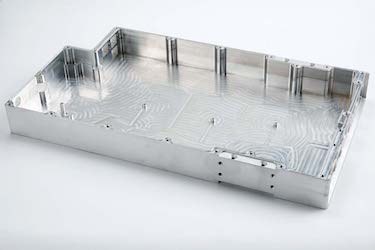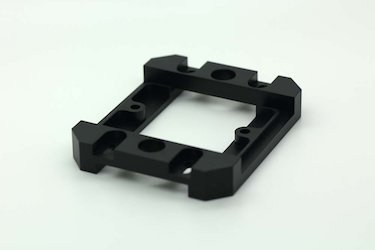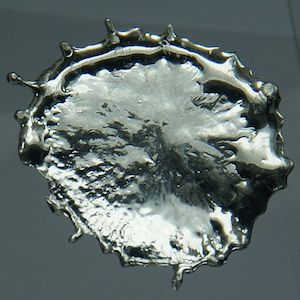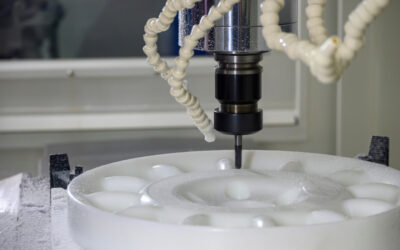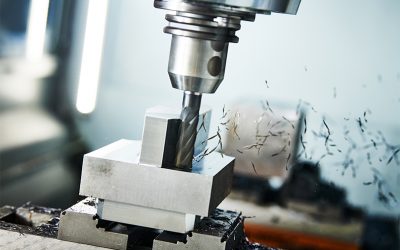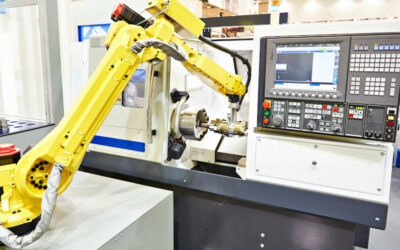If you’ve finished designing your part but aren’t sure which material to select, you’ve come to the right place. Several overarching types of materials can be used in CNC machining: metals, plastics, ceramics, composites, and wood.
Each material has unique characteristics and challenges that influence the final product properties and the overall manufacturing process. This article will explore the types of materials that can be machined and help you choose the appropriate material for your product.
5 Types of Materials Used in CNC Machining
The main categories of materials used in CNC machining are metals, plastics, ceramics, composites, and wood. Within these categories, there are tons of unique materials, each with specific properties. The following guidelines represent a general approach to materials selection for precision manufacturing, so you should consult with an expert when looking for particular properties.
#1 Metals
Metals are the most common CNC machining materials. CNC machined metals are regularly used in aerospace, automotive, electronic, and even medical applications. Steel, aluminum, brass, copper, and titanium are all machinable metals.
Learn More: Best Metals for CNC Machining
#2 Plastics
Plastics are another common CNC machining material manufacturers can use for refrigeration components, electronics, toys, sports, and other industries. Commonly machined plastics include acrylic, polycarbonate, PVC, and even nylon.
Learn More: Best Plastics for CNC Machining
#3 Ceramics
While the CNC machining of ceramics is complex, it does see use in some advanced applications. Space shuttle engine components, tank armor, and superconductors are some examples of machined ceramics. Due to their brittle nature, advanced machining operations are required to produce a durable and reliable ceramic part.
#4 Composites
Composites are another material that can be incredibly challenging for CNC machining. Indeed, they often require diamond tooling and 5-axis CNC machines to complete. Machined composites are extremely useful for automotive, aerospace, and power generation industry applications.
#5 Wood
Finally, there is the wood category. The CNC machining of wood is generally limited to more artistic applications like furniture and decoration. However, it can also be used in some structural applications.
As we have noted, some classes of materials are more difficult to machine than others. You may be wondering about what properties determine machinability and whether or not a particular material would be a good choice for your project. To help you choose which CNC material is best for your project, we will give you a closer look at the properties you may have to consider.
Essential Factors to Consider When Choosing a Material
Hardness
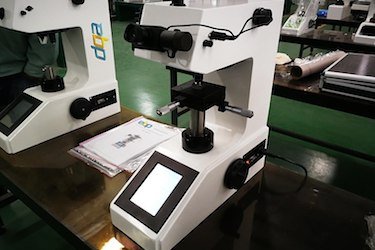
Digital Materials Hardness Tester
(Hardness-testers, CC BY-SA 4.0, via Wikimedia Commons)
Hardness directly impacts cutting speeds and the type of tool material that can be used in the CNC machining process. Using a very hard material, such as titanium, makes machining more complicated and requires a harder tool.
Harder materials can also make the cutting process slower than usual, adding labor time. On the other hand, very soft materials like polymers can easily deform during machining, requiring the use of special tools and slower working speeds to ensure chips are formed instead of simply making the plastic flow around the tool.
Both of these have the potential to affect operating costs. Brass, aluminum alloys, mild steels, and certain polycarbonates are some of the easiest materials to machine and will generally have lower processing costs as a result.
Learn More: How to Compare the Hardness of Engineering Materials
Heat Input
Heat input is another crucial variable to consider because heat conductivity, melting temperatures, and reactions to heat are different for each material. For example, if the melting temperature is very low, such as with tin, it can be tough to machine without the partial or total melting of the material.
The heat input from machining can also have subtler effects, impacting the material’s hardness and strength at the microstructural level. Another heat input consideration is around deformation when the heated material softens, and residual stresses can affect the product’s shape.
Annealing, using a more suitable machining tool, and alternative coolants are potential solutions depending on the raw material being machined and the available budget. In the case of plastics, annealing can relieve residual stresses and limit deformation.
Surface Finish
Surface finish is another crucial factor to keep in mind because various materials can produce a very rough surface finish after machining. In addition to the esthetics of the product, its functionality may be at stake.
Parts with mating surfaces may not seal well or may increase friction, which could be undesirable for some applications. Additionally, some ceramics and plastics, like acrylic, can form frosted surfaces after the CNC machining process, limiting their use as transparent windows.
Which Material is Best for Your Project?
In truth, this depends on the goals you set for your project. While this is a very generic answer, there is a vast range of materials available for CNC machining, all with unique properties. Materials such as mild steel, aluminum, brass, copper, and certain plastics generally offer great machinability, which will decrease overall processing costs.
We hope this blog provides insightful tips for you to help narrow down your choice. If you aren’t sure which material is best for your product, the experts at Gensun can assist you in selecting the best material for your project.

